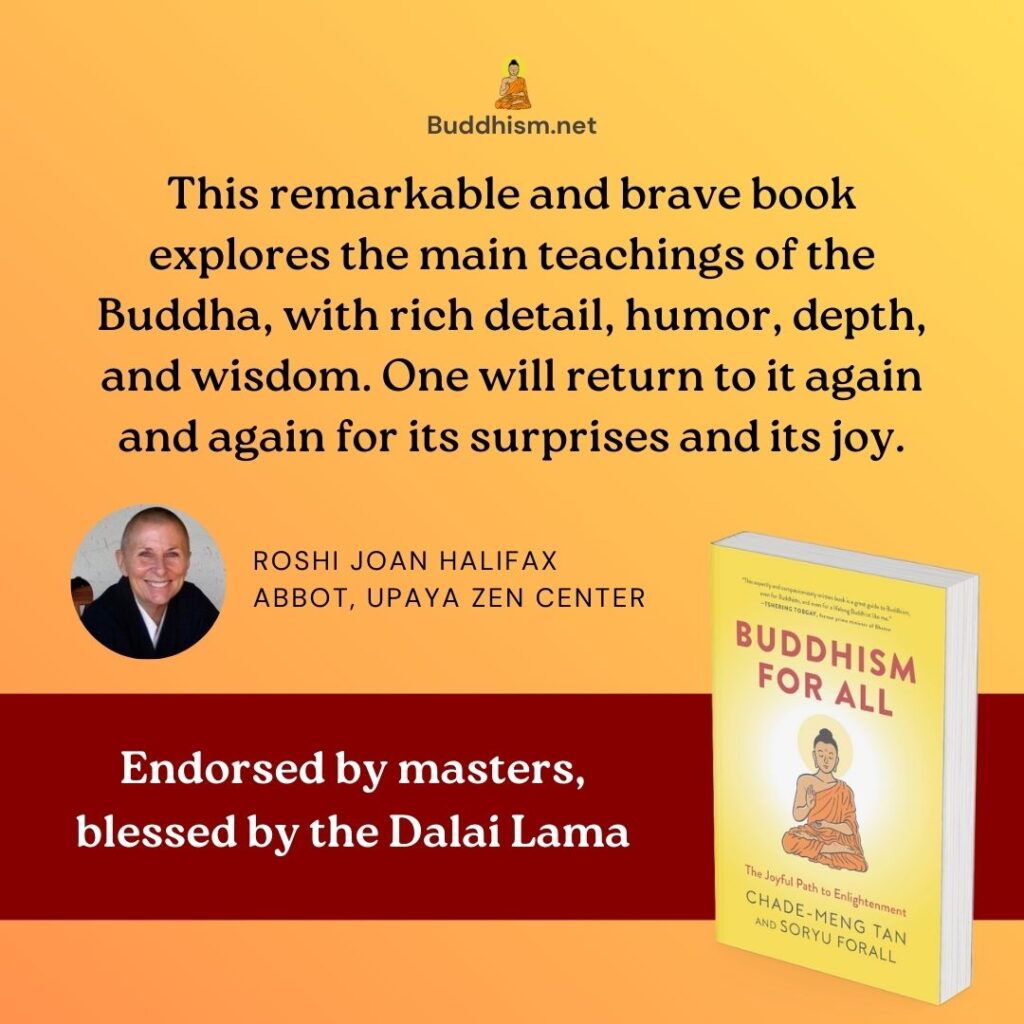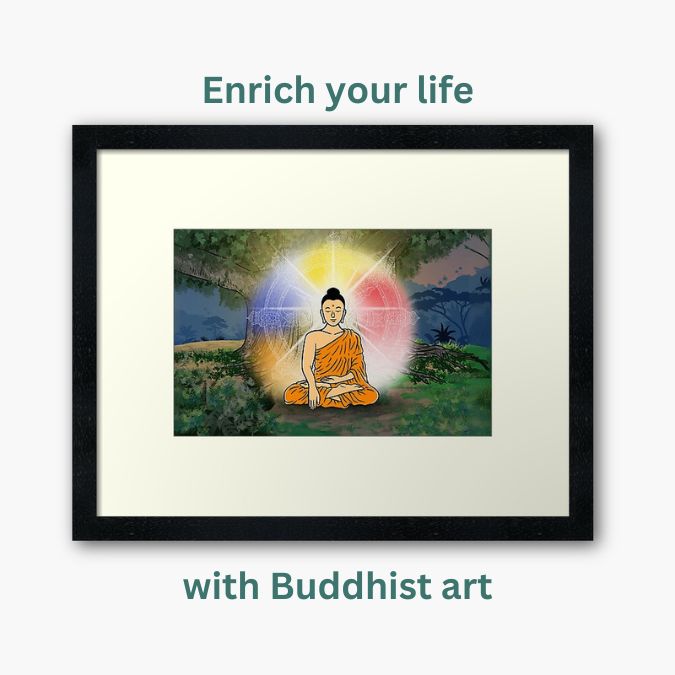
“Excellent!”
(Context: The Buddha’s Passing.)
The Buddha taught for about forty-five years. He left a body of teachings so voluminous it can take somebody reciting it full-time many months to do it. Just an initial detailed study of the entire collection took me 16 months, and Soryu 12 months (and we are still learning more every time we look).
How did the teachings get preserved? It took two remarkable individuals to do that: Ānanda and Mahā Kassapa, each a fascinating character in his own right. Here are their stories.[1]
Ānanda was a first cousin of the Buddha (their fathers were brothers) and brother of Anuruddha (the arahant with the “divine eye”). He joined the monastic order the same day as Anuruddha, which was about a year or so after the Buddha’s enlightenment, but he stayed out of the limelight for a long time. About nineteen years later, as the Buddha was getting old, he told the monastic community that he would like a permanent attendant. Everybody volunteered, except Ānanda. It turns out Ānanda was precisely the person the Buddha wanted, so the Buddha went to ask him. Ānanda said he would do it, but only if the Buddha agreed to eight conditions:
- If the Buddha received a gift of robes, he was not to pass one to Ānanda.
- The Buddha was not to give Ānanda any food that he received.
- If the Buddha received a gift of a dwelling place, he was not to give it to Ānanda.
- If the Buddha received a personal invitation, he was not to include Ānanda.
- If Ānanda was invited to a meal, he had the right to transfer that invitation to the Buddha.
- If people came from outlying areas to see the Buddha, Ānanda had the privilege to lead them to him.
- If Ānanda had any question regarding the Dharma, he could ask the Buddha at any time.
- If the Buddha gave a discourse and Ānanda was not there to hear it, Ānanda had the right to ask the Buddha to repeat the entire discourse back to him verbatim.
Ānanda explained that the first four conditions were to ensure that he would not benefit from this position materially in any way, and the last four conditions were so that he could do this job while constantly mindful of his progress on the spiritual path. So, right off the bat, you get a hint of how selfless and ethical a person Ānanda was, and why everybody loved him. More remarkably, Ānanda did not gain full enlightenment during the lifetime of the Buddha, so this wonderful, pure-hearted, selfless, ethical, loving person was pre-arahant Ānanda! Oh, yes, the Buddha agreed to all those conditions, thus began their very close 25-year relationship.
Ānanda had many wonderful qualities. The first was that he treated everybody with selfless generosity and loving-kindness. Consequently, everybody loved him. According to the Buddha, people felt uplifted just seeing Ānanda or hearing him speak.[2] Remember that he was effectively the Buddha’s executive assistant, and executive assistants have a lot of power over who gets to see the boss and when. To do that job and still have everybody love you says something. Another of Ānanda’s wonderful qualities is his amazing memory. He was said to be able to memorize verbatim everything he heard from the Buddha. This was why he was sometimes tasked to deliver lectures on the Buddha’s behalf, and he would do so by repeating what the Buddha said before. In that sense, Ānanda was the Buddha’s personal podcast. In fact, Ānanda wasn’t just a podcast, he was a skilled teacher of Dharma, even though he was not fully enlightened. The Buddha praised Ānanda saying that, “Ānanda is still a trainee, yet it is not easy to find one who equals him in wisdom.”[3]
Mahā Kassapa had a very different personality from Ānanda. Mahā means great, so Mahā Kassapa means the Great Kassapa, mostly to distinguish him from many others also named Kassapa, but there is a good reason why people tagged the Mahā onto him. While Ānanda was the brother everybody loved, Kassapa was the no-nonsense wise elder brother everybody looked up to. Kassapa was the perfect model of the disciplined and austere life devoted to Dharma. In fact, Kassapa is such an important figure in Buddhism that the Zen tradition traces their lineage back to him.
Kassapa was born to a very rich family. His father owned sixteen villages and he was the only child, yet somehow, he always wanted to be an ascetic. Out of duty to his parents, he agreed to take a wife, a beautiful young woman from another rich family called Bhaddā Kapilānī. Fascinatingly, Bhaddā shared the same aspiration, she too wanted to be an ascetic and only married out of duty to her parents. When they both found out that they shared the same aspiration, they both decided to remain celibate, even while living as a married couple and sharing a bed. They continued doing that until both of Kassapa’s parents passed away. Shortly after that, the couple gave away all their property, set free all their serfs, shaved each other’s heads, donned ascetics’ robes, and wandered off in different directions. It was said that the day they parted, the power of their virtue shook the earth.
As the story goes, the Buddha felt the earth shaking and knew an outstanding disciple was coming his way, so he walked alone to where he knew Kassapa would wander to and sat under a tree. When Kassapa arrived at the spot, he saw a man sitting there with the full splendor of a buddha, he immediately knew, “This must be the master for whose sake I have gone forth.” He fell to the Buddha’s feet and asked to be his disciple. The Buddha ordained him on the spot. Seven days after that, Kassapa gained full enlightenment.
Kassapa chose to practice the “austere practices”, including wearing only robes made by stitching together discarded pieces of cloth, subsisting only on alms food given outside the door (not accepting any invitation to enter anybody’s house), and living only in the forest (not living in a monastery in town). He lived it to perfection. Kassapa was praised by the Buddha as the monk “foremost in austere practices”.[4] The Buddha once asked Kassapa why he did that, and he replied, “I do it for two reasons. First, it’s for my own happiness here and now, and second, it is out of compassion to future generations so that they have an example to follow.”[5] The Buddha praised his wisdom.
In case you were worried about Bhaddā Kapilānī, she also eventually found her way to the Buddha, also achieved full enlightenment, and was praised by the Buddha as the nun “foremost in recalling past lives”.[6] So, things went well for both of them.
These two characters, Ānanda and Mahā Kassapa, became the people most responsible for preserving the teachings. What happened? That story, coming up next.
Activities
- Reflect on this post with Angela:
- It is wonderful to have examples of Buddha’s own disciples to be inspired by, as we learn and walk this path. Different styles of teachers are suited to people with different inclinations and dispositions — perhaps also one of the reasons why there are so many versions of Buddhism in this modern day.
- Examine yourself. What style or type of teacher would be suitable for you? Why? What are your inclinations?
- What other reflections do you have from this article?
References
[1] The stories of Ānanda and Mahā Kassapa are taken largely from Nyanaponika and Hecker’s Great Disciples of the Buddha: Their Lives, Their Works, Their Legacy (The Teachings of the Buddha). Wisdom Publications (2003).
[2] Dīgha Nikāya 16.
[3] Aṅguttara Nikāya 3.78.
[4] Aṅguttara Nikāya 1.191.
[5] Saṃyutta Nikāya 16.5.
[6] Aṅguttara Nikāya 1.244.
Artwork by Colin Goh.


